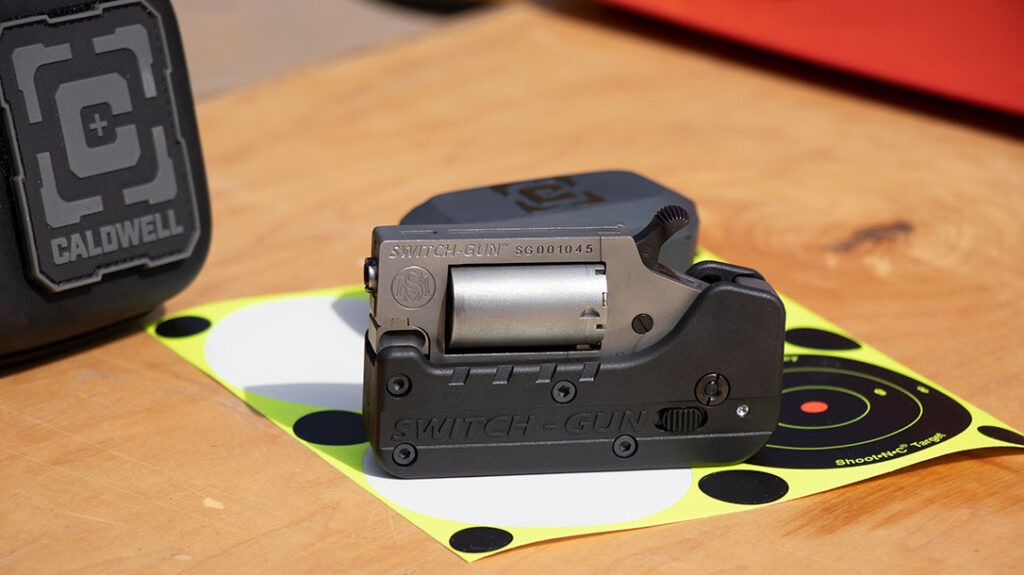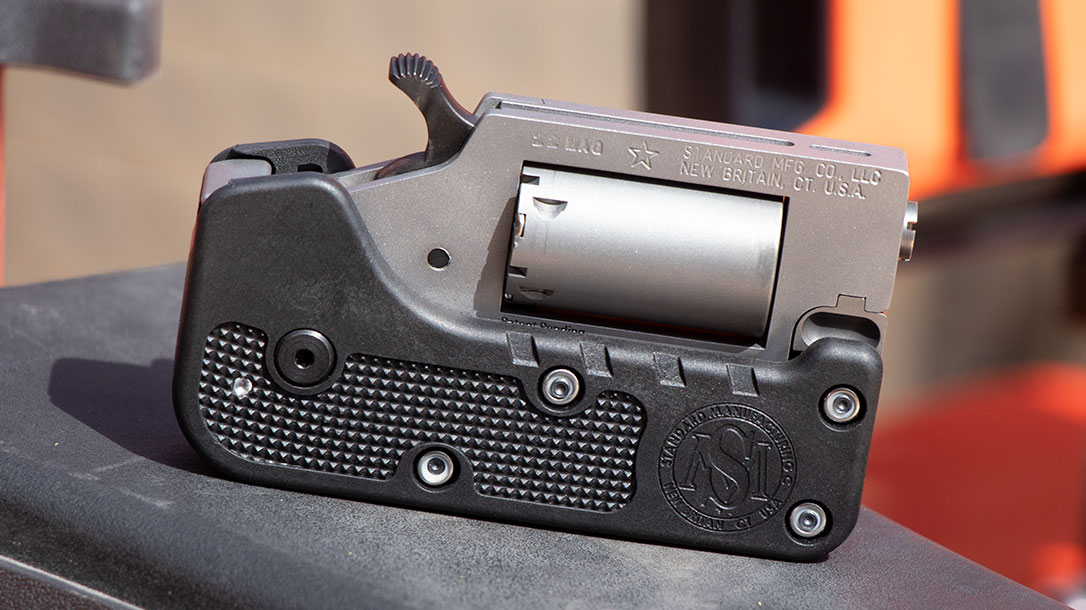I carry concealed every day for work, and every day I’m off because I refuse to be a victim. After doing this for more than 20 years, I’ve learned one size does not fit all. However, the Switch-Gun from Standard Manufacturing does fit anywhere.
The .22 WMR Switch Gun from Standard Manufacturing
I can remember going to the beach in Florida with my wife and kids. Unfortunately, there was no way to carry my gun on my person. And I wasn’t thrilled about the idea of leaving it in a backpack, cooler, or under a towel. Even my scandium J-frame five-shot revolver seemed too big.
I’m pretty sure that was the same line of thought that led to the creation of the Switch-Gun by Standard Manufacturing in New Britain, Connecticut. First, they chose a very small caliber—the .22 WMR (Winchester Magnum Rimfire) or .22 Mag for short. It is slightly longer than a .22 LR but boasts far better velocity.
Advertisement — Continue Reading Below
Although no one touts it as a man-stopper, several manufacturers make .22 WMR ammo specifically for self-defense. This includes Speer Gold Dot, Winchester 22 Defender, and Hornady Critical Defense.
Would I advocate this caliber for everyday carry? Probably not, but a .22 WMR in your pocket beats a .44 Magnum at home on the nightstand all day. And choosing between a little gun and no gun is a no-brainer.
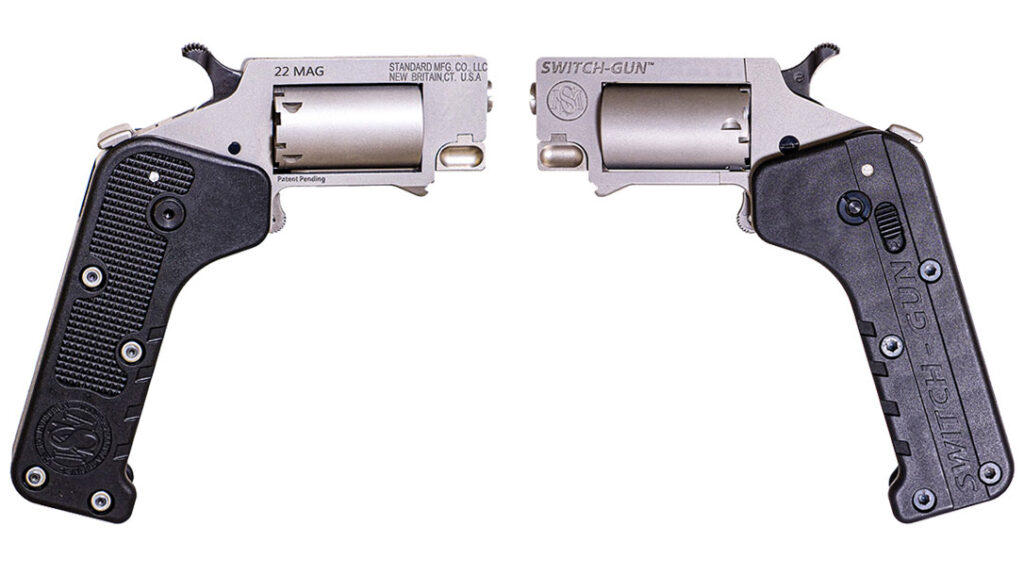
Advertisement — Continue Reading Below
The Small but Manageable Switch Gun
This brings us to the second part of the creation of the Switch-Gun—its size. They took a very small revolver and made it even more compact by making the grip foldable. At the same time, they made it virtually snag-proof. And it looks nothing like a gun when someone sees a bulge in your pocket.
One more advantage of the folding grip is that it is quite large. No more tiny grips on a tiny gun. This one is easily as large as the grip on my J-frame and very easy to control.
The Switch-Gun is a five-shot, single-action revolver with no external safety. However, the folded grip completely covers the trigger making any kind of negligent discharge nearly impossible.
Advertisement — Continue Reading Below
A spring-loaded, sliding button on the left side of the grip releases the frame of the gun, and it springs into place like a switchblade knife. Clearly, that is where they got the name. A large rectangular paddle sits behind the hammer. Push forward on the paddle, and the Switch-Gun folds back to the closed position.
Concessions
Whenever you miniaturize a firearm, there are tradeoffs. Smaller guns have smaller controls and are simply harder to shoot. While the oversize grip helps to mitigate this, the trigger does not. It is a tiny, knurled knub and requires a considerable amount of force to make it discharge.
My Lyman Trigger Gauge only goes up to 12 pounds, and it is considerably harder than that. This is a safety feature found on many pocket guns. A harder trigger means the shooter has to really want the gun to go off. No cocking it and accidentally firing before ready.
Advertisement — Continue Reading Below
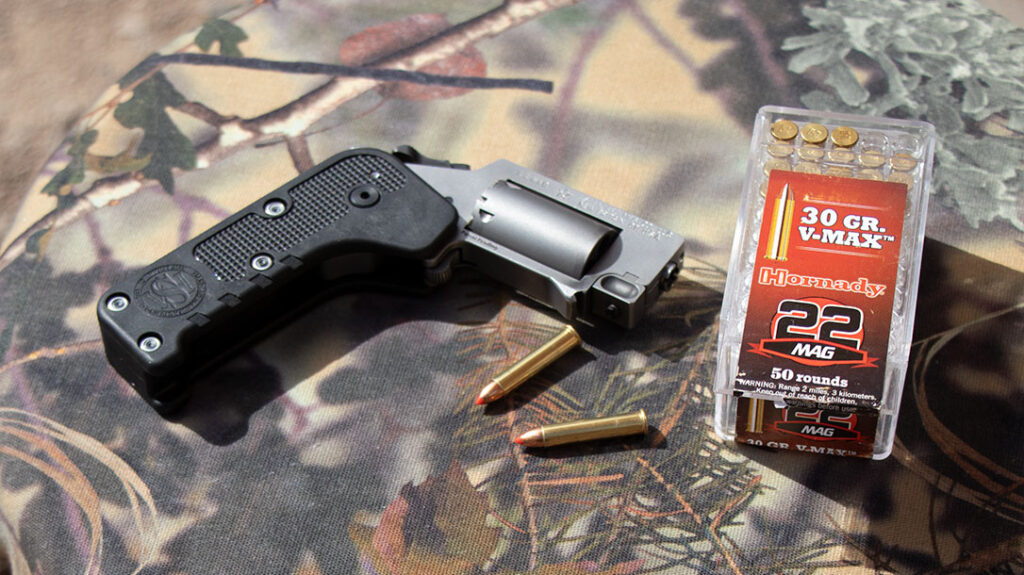
The sights are another place where most small guns come up short. The reason is the guns were made for very close quarters. If you are point shooting or at point-blank range, you don’t need sights. Plus, they are one more thing to get snagged in a pocket or purse.
The Switch-Gun has an unusual sight system often referred to as a guttersnipe sight. This is a narrowing channel cut down the top of the frame. Your eye naturally aligns and centers the channel.
Advertisement — Continue Reading Below
I received the older model Switch-Gun for my testing. It has a small diameter hole drilled into the front of the channel for a light-gathering fiber-optic. The new model of Switch-Gun has a trench sight that runs the length of the top strap.
Reloading the Switch Gun
Like all revolvers, reloading is relatively slow. In this case, you pull down on the spring-loaded catch and pull the entire center pin out the front. Then the cylinder simply rolls out on either side.
The center pin acts as a manual ejector to knock out the empty shells. With a little practice, it actually works very well.
Advertisement — Continue Reading Below
Reload by dropping five new rounds into the chambers, roll the cylinder back into place, and slide the center pin back into the hole. The spring-loaded catch locks it in securely.
Shooting Impressions
It took virtually no time to learn how to operate the Switch-Gun, so it was time to hit the range. I set up the test at 7 yards. Honestly, this gun was designed for about 10 feet and in. But I wanted to get the velocity at 15 feet from the muzzle, so 7 yards seemed about right.
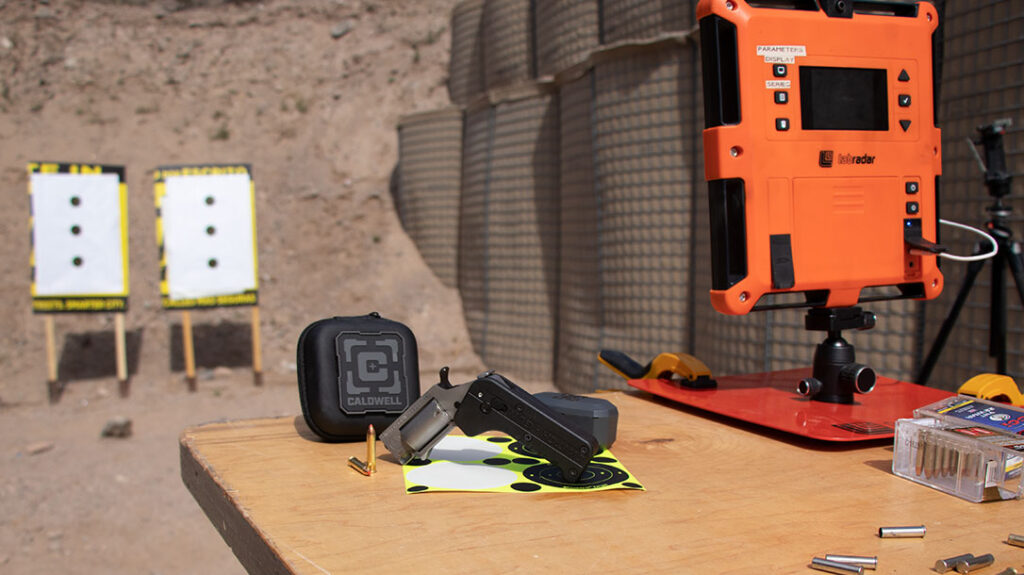
Advertisement — Continue Reading Below
This was definitely one of the hardest guns I have ever tested for accuracy simply because the sighting system is tiny and not designed to be pinpoint accurate. They are designed for self-defense. I wonder if I could have gotten better results by simply pointing the gun instead of trying to aim it.
The groups were certainly within the area of a man’s chest at that range. Sometimes I got several rounds touching each other. I do believe that with a Ransom Rest, I could have gotten a lot tighter groups.
The feature that I noticed the most was the trigger. It is hard. Really hard. After about 25 rounds, I noticed my trigger finger was getting pretty sore. I know this is a safety feature.
Advertisement — Continue Reading Below
No one in their right mind is going to take this gun to the range to put 200 rounds through it on a given afternoon. But it is tough on your average gun writer who is trying to slowly press the trigger and not jerk it.
The first few times I cocked the gun, I did so very slowly and deliberately. It was brand new and needed a little breaking in. The cylinder didn’t fully click into the cylinder stop. After 10 rounds or so, I never noticed it again. I also got a lot more aggressive with the gun—it’s made for self-defense, after all—and it performed perfectly.
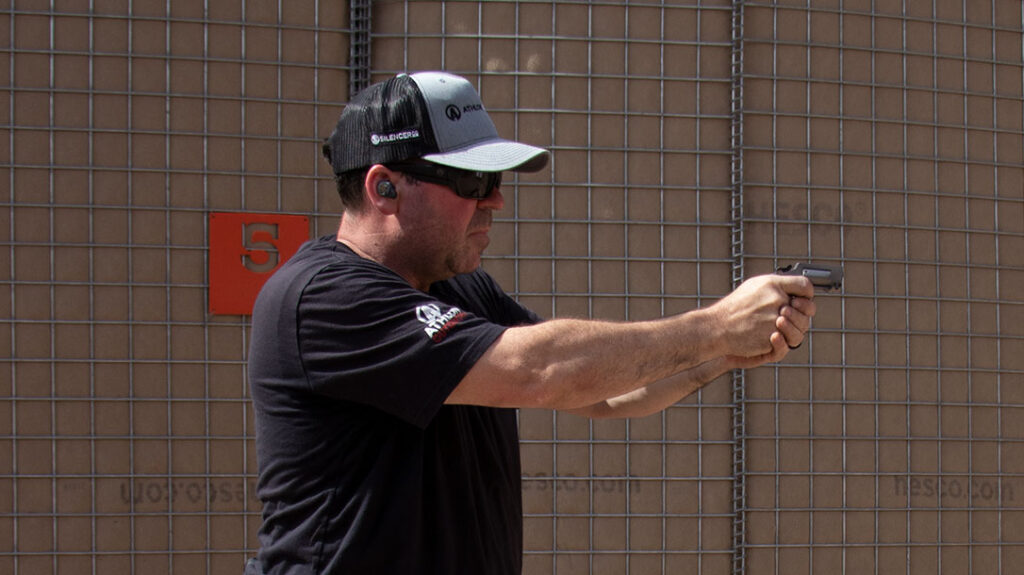
Running the Switch Gun
Knocking out the empty cases with the cylinder rod sometimes took several whacks as the brass had expanded and was tight. If I wanted a “fast” reload with this gun, I would get in the habit of carrying an extra loaded cylinder in a pouch.
Standard Manufacturing sells spare cylinders, and I am guessing it is just for that reason. They also sell “belt holsters,” which are Kydex pouches you can slide the Switch-Gun into. Much like a cell phone pouch.
Personally, I think the gun is made for pocket carry. It takes up the same amount of room as my wallet and fits perfectly in a front or rear pocket. It fits even better in a cell phone side pocket in a light jacket.
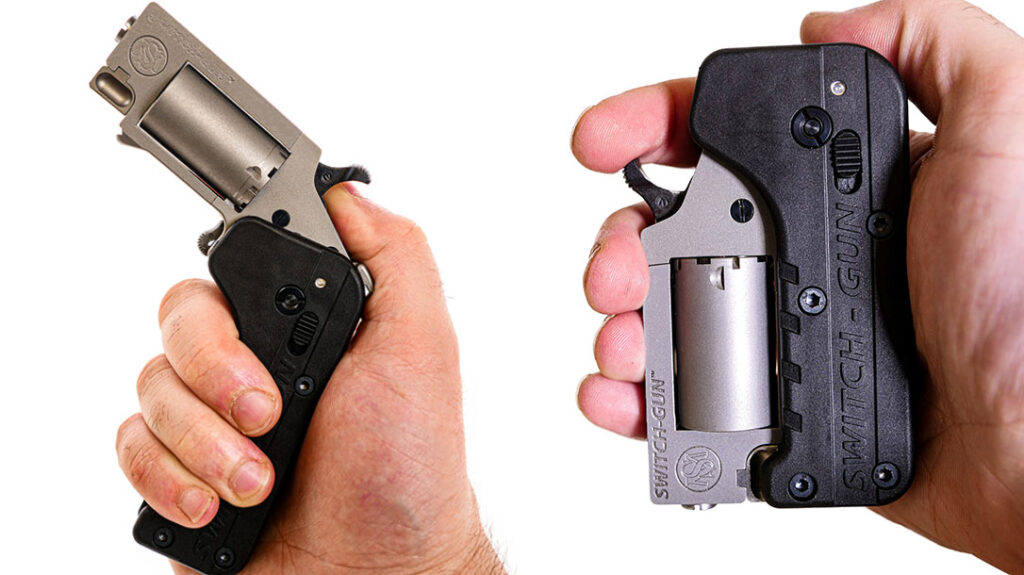
Normally I like to run guns through a series of tactical drills. This includes moving while shooting, reloading while moving, and shooting from different positions like kneeling and prone.
This gun is a different animal. The best drills I came up with were simply drawing from a pocket, flipping open the gun like a switchblade, and point-shooting the target. It is good to see the difference between drawing from a pocket while seated versus standing. And I do think these types of drills are crucial before carrying a Switch-Gun.
Different styles of pants pockets make this much easier or harder from a seated position. If my wife was carrying it, I would want her to practice drawing from where she put it in her purse. Likewise, I would have her make sure not to accidentally point it at herself when drawing or putting it back.
Final Notes
So, what does a die-hard, federal tactical and firearms instructor who touts big guns think of this little thing? I absolutely love it. And I’m surprised I do.
This isn’t my number one choice for personal defense. But it’s a fantastic choice when it’s hot, and you aren’t wearing a belt or possibly even a shirt. This is also a great gun when taking a walk with your dog at the beach.
And it is a great gun to toss in a pocket if you simply aren’t willing to take the time to go back and put on a gun and holster before you run to grab the mail or a gallon of milk.
Remember, a mouse gun in your hand beats a magnum back at home all day long.
For more information, please visit STDGun.com.
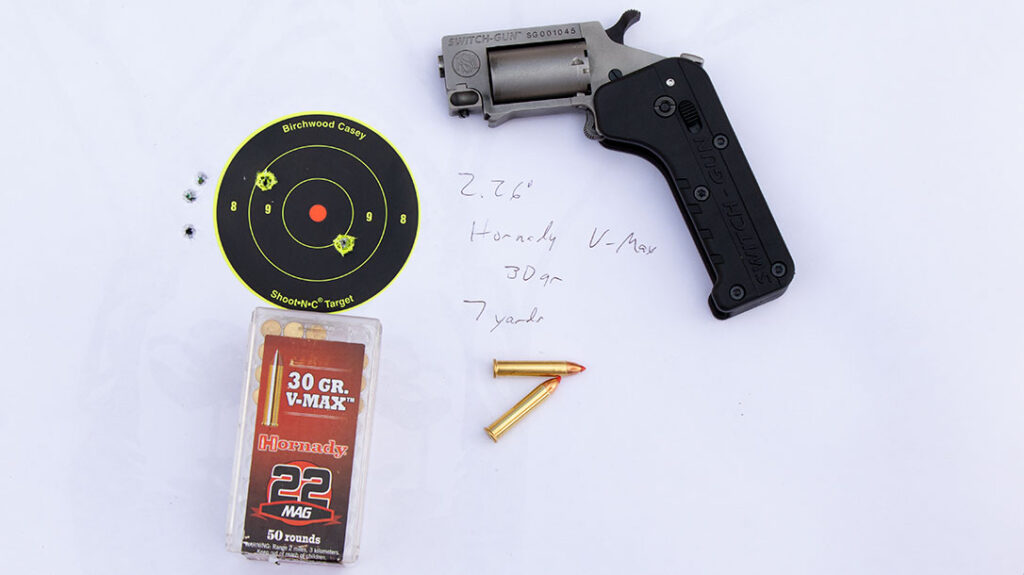
Standard Manufacturing Switch-Gun Specs
Caliber: .22 WMR
Barrel: 0.88 inches
Overall Length: 3.75 inches folded
Weight: 8.7 ounces (empty)
Grips: Polymer
Sights: Fixed channel cut
Action: Single Action
Finish: Stainless
Capacity: 5
MSRP: $449
Performance
| LOAD | VELOCITY | ACCURACY |
| CCI A22 Magnum 35 | 772 | 3.30 |
| CCI VNT 22 WMR Polymer Tip 30 | 902 | 2.37 |
| Hornady Critical Defense 45 | 737 | 2.36 |
| Hornady V-Max 30 | 849 | 2.26 |
Bullet weight measured in grains, velocity in feet per second (fps) by chronograph and accuracy in inches for best five-shot groups at 7 yards.
This article was originally published in the Personal Defense World August/September 2022 issue. Subscription is available in print and digital editions at OutdoorGroupStore.com. Or call 1-800-284-5668, or email subscriptions@athlonmediagroup.com.
